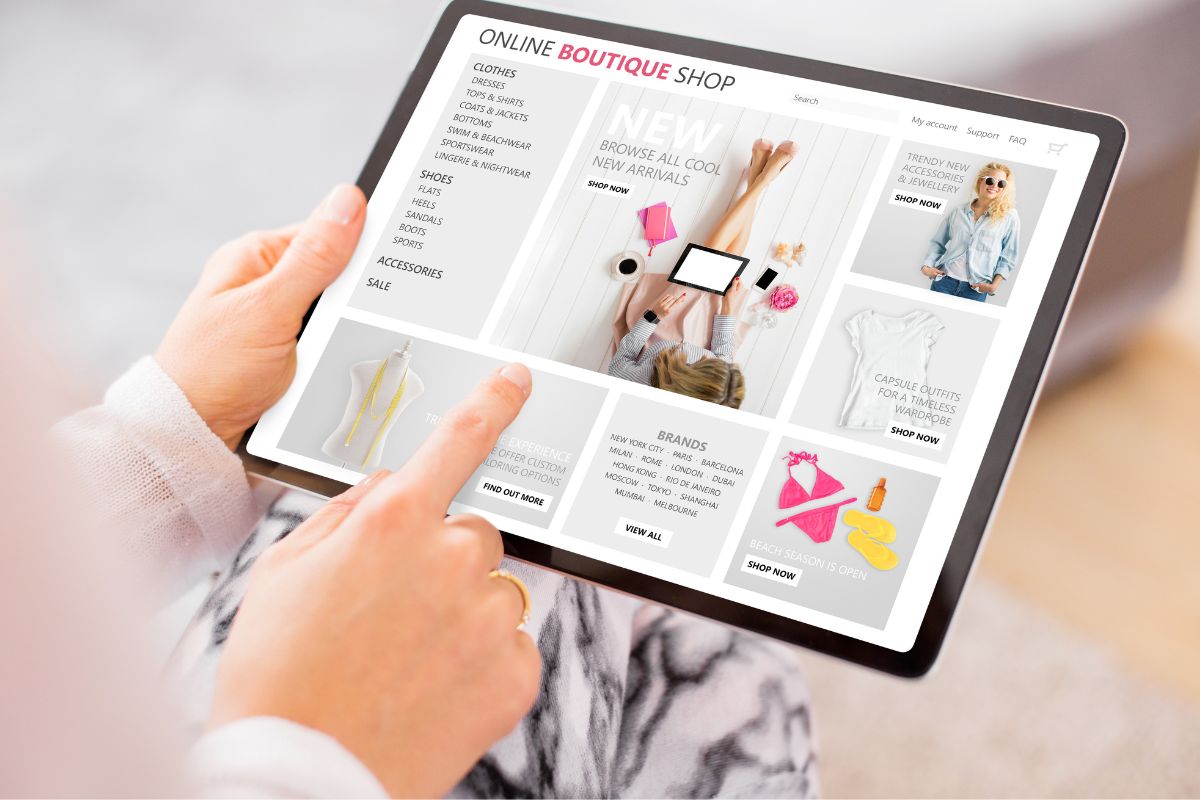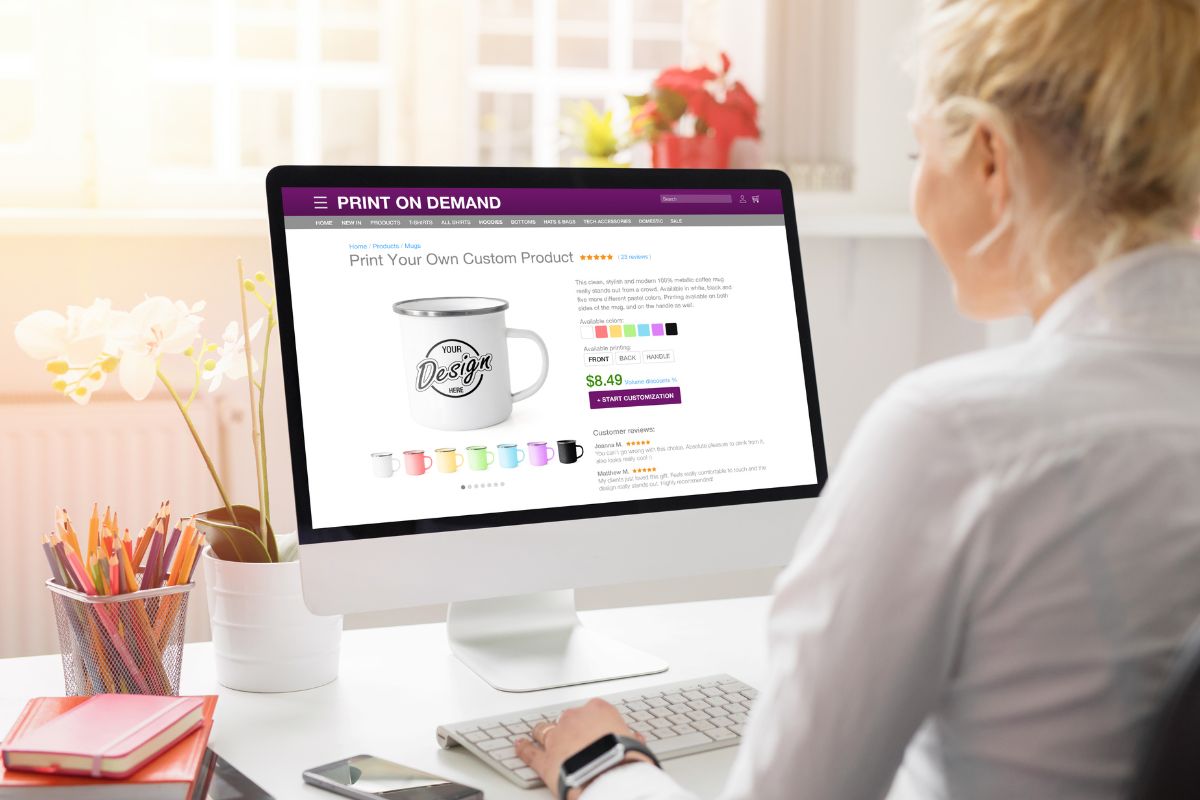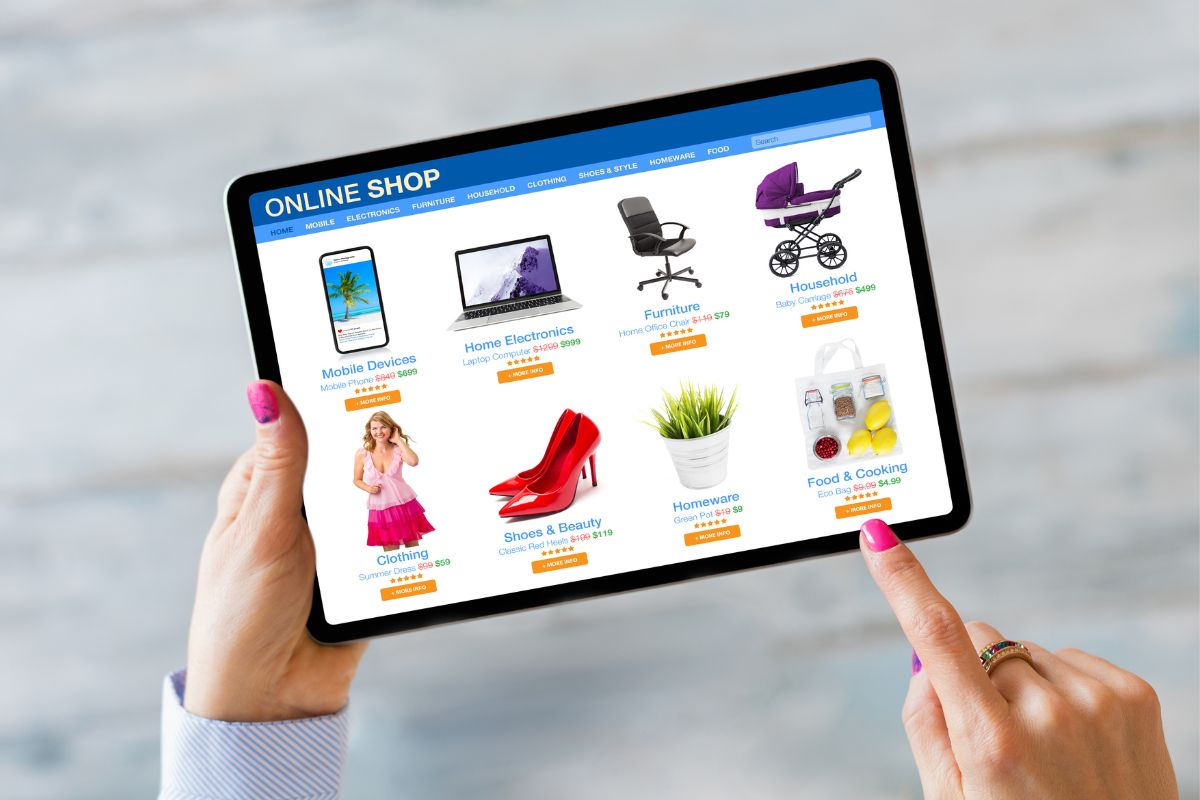Etsy has become a go-to platform for artisans and vintage collectors looking to share their work with a global audience. Starting an Etsy shop is an accessible way to turn your creativity into a business. Whether it’s handmade jewelry, custom prints, or vintage finds, Etsy connects your products with buyers who appreciate extra-special goods. Setting up your shop is straightforward—you can establish your online presence and begin selling your unique items with just a few clicks.
Before diving in, it’s key to understand Etsy’s business model and what makes a successful Etsy shop. Detailed planning can help you stand out in a crowded marketplace. This involves not just the creation of your products but also learning about pricing strategies, shop policies, and customer service expectations. Knowing how to present your brand visually and create compelling product listings will make a significant difference in capturing the attention of shoppers.
Marketing your Etsy shop also plays a crucial role in your success. Utilizing social media platforms like Instagram or Pinterest can drive traffic to your listings. Crafting a consistent and authentic brand story across these channels encourages engagement and attracts a loyal customer base. By investing time in learning how to properly set up your Etsy shop, you’re setting the stage for a fulfilling entrepreneurial journey.
Understanding Etsy and Its Marketplace
When you start an Etsy shop, you’re diving into an expansive online marketplace known for handmade goods, vintage items, and craft supplies. It’s a platform where creativity meets commerce.
The Basics of Etsy and Handmade Goods
Etsy is a unique online marketplace that significantly differs from other ecommerce platforms. It focuses specifically on handmade goods, vintage items, and a wide array of craft supplies. As a seller, this is where you can showcase your craftsmanship and connect with buyers who appreciate the personal touch that comes with handmade products. Remember:
- Handmade Goods: Items must be made by you or an outside manufacturer that meets Etsy’s handmade policy.
- Vintage Items: These should be at least 20 years old.
- Craft Supplies: This category includes tools, materials, and ingredients that are intended for creating new handmade items.
To succeed on Etsy, your products should fit neatly into these categories, presenting them in a shop that reflects your brand’s uniqueness and commitment to quality.
Etsy’s Position in the Online Market
Etsy has carved out a significant niche in the online marketplace. It stands out for fostering a community feel among sellers and buyers, which is quite appealing to those looking for authentic, handcrafted goods. As you establish your presence, you will be capitalizing on:
- Etsy’s reputation: A trusted platform for buyers seeking originality and quality.
- Community camaraderie: Engage with fellow artisans and a supportive network.
- Market trends: Stay ahead by understanding what’s in demand within the Etsy ecosystem.
By aligning your shop with the principles that set Etsy apart, you tap into a ready market that values the time and skill invested in each piece you offer.
Planning Your Etsy Shop

Starting an Etsy shop involves strategic planning to ensure that your brand stands out and your products meet customer demands. Your shop’s success hinges on a well-thought-out business strategy, distinctive branding, and a clear understanding of what you’ll sell.
Choosing Your Shop Name and Branding
Selecting a shop name is crucial as it’s the first impression customers have of your business. Aim for a name that’s both memorable and relevant to your products. Consider its uniqueness on Etsy to avoid confusion with other shops. The branding aspect isn’t just about picking a name; it’s about conveying the essence of your business through visual elements such as your logo, color scheme, and typography. Think of your logo as a visual shorthand for your shop’s personality and ethos.
Determining What to Sell
Deciding what to sell sets the course for your Etsy shop. Focus on items that not only reflect your skills and passion but also have a market demand. Research current trends, but also look for timeless products that customers seek out. The items should also align with Etsy’s handmade, vintage, or craft supply categories. Here’s a quick product category list to consider:
- Handmade goods: Jewelry, art, clothing, home décor.
- Vintage items: Any item that is at least 20 years old.
- Craft supplies: Tools, materials, or ingredients for DIY projects.
Crafting Your Business Strategy
Your business strategy should address how you’ll manage and grow your Etsy shop. This encompasses everything from pricing and marketing to customer service and scaling up your operations. Establish clear goals and how you plan to achieve them. Also, factor in aspects like production time, shipping logistics, and inventory management. This will serve as your roadmap to turning your Etsy venture from a hobby into a thriving business. Consider the following business plan topics as part of your strategy development.
Setting Up Your Etsy Shop

To start a successful Etsy shop, you need to focus on creating a solid foundation by setting up your account correctly, optimizing your listings for visibility, and managing your stock effectively. Follow these specifics to ensure your shop is well-organized and appealing to customers.
Creating an Account and Shop Preferences
To open your Etsy shop, begin by creating an Etsy account. During this process, you’ll establish crucial shop preferences. Ensure you choose the correct shop country and default language to accurately represent your location and customer base. This sets the stage for your shop’s searchability and customer interaction.
- Go to Etsy’s website and click Sign In, followed by Register.
- Provide your email address, create a username, and set a password.
- Follow the prompt to Open Your Shop.
- Set your shop preferences:
- Shop language
- Shop country
- Shop currency
- Consider the customer experience in your region and align your preferences accordingly.
Listing Your Items and SEO Best Practices
When creating a listing, ensure the title and tags use relevant keywords. Your product titles and descriptions should accurately describe the item while incorporating SEO best practices to improve visibility.
- Title: Use the front-loaded keywords.
- Tags: Include keywords that potential buyers might use.
- Category: Select the most accurate category for your item.
Here’s a quick guide for listing an item:
- Click Add a new item in your shop manager.
- Fill out the details:
- Title: Keep it clear and descriptive.
- Category: Choose one that best fits your item.
- Tags: Use words customers might search for.
- Remember, SEO-friendly titles and tags help customers find your items.
Managing Your Inventory and Stock
For efficient inventory management, categorize your items and keep track of your stock. It’s important to maintain proper stock levels to meet customer demand without overproducing.
- Inventory tracking: Use spreadsheets or software to monitor stock levels.
- Listing quality: Regularly review listings to ensure they reflect current stock.
Implement these steps to manage your inventory:
- Organize your products by type and popularity.
- Maintain a log to track available items and note when to restock.
- Update your Etsy listings whenever stock changes occur.
Crafting Effective Product Listings

Creating effective product listings on Etsy is crucial to attracting customers and making sales. Your listing is the frontline representative of your products and must be thoughtfully crafted to entice potential buyers.
Writing Enticing Product Descriptions
Your product descriptions should be compelling and informative, providing essential details without overwhelming the reader. Begin with a strong opening sentence that encapsulates the appeal of your item. Use bullet points to highlight key features such as materials, size, and uses. Be specific about the benefits of your product and why it’s a must-have. Remember to include relevant keywords to improve searchability on Etsy, but avoid keyword stuffing.
Showcasing Your Products With Quality Photos and Videos
Photos and videos significantly impact your listings’ performance. Use high-resolution images and consider hiring a professional photographer if possible. Your product photos should be well-lit, in focus, and show your item from multiple angles. Including a video can give buyers a better sense of scale and functionality. Always ensure your visual content is a true representation of the product.
Setting the Right Price and Shipping Details
Price your items competitively by considering both material costs and your time. Your price should also reflect the uniqueness and quality of your handmade product. Be upfront about shipping costs and options. Offer a range of shipping solutions, and be clear if you’re willing to ship internationally as different currency values can affect purchase decisions. Accurately presenting these details helps build trust with your customers.
Managing Finances and Legalities

When you start your Etsy shop, understanding the financial and legal aspects is crucial for smooth operations. You’ll need a clear grasp of Etsy’s fees, tax obligations, licensing requirements, and the setup of payment processing methods.
Understanding Etsy’s Fees and Revenue Model
Etsy uses a combination of listing fees, transaction fees, and payment processing fees to generate revenue. Each item you list on Etsy requires a $0.20 listing fee, which keeps the item on the site for four months. When you make a sale, Etsy charges a 5% transaction fee on the total sale price, including shipping. If you use Etsy Payments, this service also incurs a payment processing fee, which varies by country.
- Listing Fee: $0.20 per item
- Transaction Fee: 5% of the sale price including shipping
- Payment Processing Fee: Varies by country
Navigating Taxes and Business Licensing
You must understand your tax obligations and obtain the necessary business licenses or permits. In most countries, your income from Etsy will be subject to taxation. Consult a local tax professional to understand specific tax requirements. For your business license, check with your local or national government to find out if you need one to legally operate your shop.
- Business Taxes: Depend on your country’s laws and the amount of revenue you earn.
- Business License: Depends on local regulations.
Setting Up Payment Processing and Banking
To accept payments on Etsy, you must set up Etsy Payments, which allows buyers to use various payment methods such as credit cards, debit cards, and Etsy gift cards. A currency conversion fee is applied for shops that incur a currency conversion. It’s essential to link a bank account that accepts the currency you’ve selected for your shop. Always ensure secure transactions by using reliable payment methods, and protect your customers’ credit card information.
- Etsy Payments: Allows multiple payment methods.
- Currency Conversion Fee: Applied if currency conversion is required for your bank account.
- Bank Account: Must accept your Etsy shop’s currency.
Marketing and Growing Your Etsy Shop

Effectively marketing your Etsy shop and fostering growth requires a well-thought-out strategy that focuses on your unique products and customer base. By understanding and engaging with your audience, developing your brand, and utilizing analytical tools, you can create a thriving online business on the Etsy marketplace.
Developing a Marketing and Sales Strategy
Your marketing and sales strategy should be a tailored plan that accentuates the uniqueness of your brand and inventory. Start by identifying your target market within the Etsy community. Craft a brand message that resonates with this audience, emphasizing what sets you apart from other sellers. Use a mix of promotional techniques such as search engine optimization (SEO) to improve visibility, social media marketing to reach potential customers, and email marketing to keep your shop top-of-mind for repeat buyers.
Understanding and Engaging with Your Customers
Building a rapport with your customers is crucial. Engage with them by promptly responding to messages and customizing orders when possible. Gather feedback through Etsy’s review system or direct customer outreach. This information will help you refine your product offerings and customer service approach. Remember, loyal customers can become brand advocates, spreading the word about your shop to new buyers.
Leveraging Tools and Analytics for Growth
Etsy offers a suite of tools and analytics designed to help sellers track performance and optimize their shops. Regularly review your shop’s stats to understand customer behavior and product performance. Leverage this data to make informed decisions about inventory management, product development, and promotional activities. Additionally, explore external tools or templates that can streamline operations and marketing efforts, allowing you to spend more time creating and less on administrative tasks.
Your commitment to these strategies will be fundamental to driving traffic to your shop, converting visitors to buyers, and building a successful online business on Etsy.
Operating Your Etsy Shop

When running your Etsy shop, focusing on efficient order management and customer service, optimizing shipping, and expanding your product range with personalization options are key to your success.
Managing Orders and Customer Service
Your ability to manage orders effectively and provide exemplary customer service will define much of your success on Etsy. Ensure you have a clear processing time for each listing, which sets realistic expectations for your buyers. Use a consistent system to track orders and manage your inventory, involving SKU numbers for seamless organization. Always respond to customer questions promptly and courteously, aiming for positive reviews that can leverage future sales.
Optimizing Shipping and Handling Processes
Efficient shipping and handling are vital. Print shipping labels directly from Etsy to save time and access potential postage discounts. Regularly review and optimize your shipping processes to keep costs low and improve delivery times. Remember, offering a combination of shipping options allows customers to choose what works best for them, enhancing their shopping experience.
Expanding Product Offerings and Customizations
Diversify your shop by expanding into new categories: consider adding handmade items, vintage finds, or craft supplies. Introduce product variations and the option for personalization, making each item feel unique and tailored. These offerings not only attract different types of customers but also cater to those looking for special, one-of-a-kind products on Etsy.
Building Your Brand and Reputation

When you start an Etsy shop, establishing a strong brand and solid reputation is crucial to differentiate your handmade goods from other sellers and create a lasting impression on your customers.
Establishing a Professional Online Presence
Creating a professional online presence starts with choosing the right username for your Etsy account, which will influence your shop’s name and inform customers about your brand. Ensure that your username reflects the type of products you sell and aligns with your overall branding strategy. Next, design a compelling logo that represents your brand effectively and can be used consistently across various platforms to enhance brand recognition.
Your shop’s bio is another opportunity to convey your brand’s story and values. Keep it concise, highlighting your journey as a maker and the uniqueness of your handmade goods. Remember to utilize high-quality images for your products and a banner that supports your brand’s theme, solidifying a professional appearance for your Etsy shop.
Gathering Customer Reviews and Feedback
After opening an Etsy shop, prioritize building your reputation by gathering customer reviews and feedback. Positive reviews can significantly influence potential customers and act as powerful social proof of the quality and craftsmanship of your items.
Encourage your customers to leave reviews by following up after their purchase with a thank you note, reminding them how valuable their feedback is to your business. Respond professionally to any reviews or feedback, showing that you are attentive and committed to customer satisfaction. Keep track of customer suggestions to continually improve your products and shopping experience, further enhancing your reputation on Etsy.
Frequently Asked Questions
Starting an Etsy shop brings up many questions about the process and what it entails. Here are some of the most common queries potential sellers have as they consider opening a shop on Etsy.
What are the requirements to create a seller account on Etsy?
To create a seller account on Etsy, you need to be at least 18 years old. Additionally, you must provide a valid credit or debit card and connect to a bank account in a country that supports Etsy Payments. You’ll also be asked for personal identification information to set up your shop.
Do I need a business license to open a shop on Etsy?
Whether you need a business license to open an Etsy shop depends on local laws. Duties such as collecting sales tax or declaring income are your responsibility, so it’s vital to understand your area’s requirements related to running a business.
How can I set up an Etsy shop if I have no money to start with?
You can start an Etsy shop with minimal upfront costs. Your primary initial investment is time – taking great photos of your products, writing detailed descriptions, and doing market research. Etsy’s listing fees are relatively low, and you can include costs in your pricing once sales begin.
What are the initial costs involved in opening an Etsy store?
Initial costs for opening an Etsy store include listing fees ($0.20 per item), transaction fees (5% of the sale price), and payment processing fees (varies by location). If opting for Etsy advertising or promotional tools, those would be additional costs to consider.
What steps should I take before officially opening my Etsy shop?
Before opening your Etsy shop, conduct market research to understand your competition and potential customers. Determine your shop policies, set competitive, yet profitable pricing, and create a cohesive brand identity. For online marketplace success, prepare high-quality photos and descriptions for your listings.
What are the tips for selling on Etsy as a beginner?
As a beginner on Etsy, focus on optimizing your product listings with strong keywords, high-quality photos, and clear, detailed descriptions. Provide excellent customer service, gather and utilize customer feedback, and continuously refine your shop based on performance and trends in Etsy entrepreneurship.



